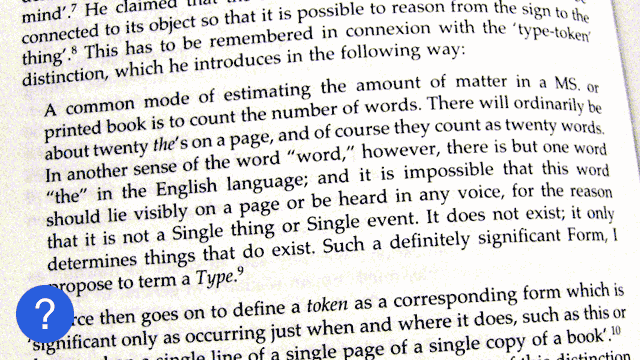Semiotics, Pt. 2
Yesterday I talked about the book This Means This, This Means That: A User's Guide to Semiotics that is helping me understand this key piece of visual communication theory. Semiotics, the study of signs and how they communicate, is something that I as a design educator should know—but in reality I can barely tolerate. Even an allegedly straightforward explanation like Semiotics for Beginners by Daniel Chandler makes my eyes glaze over by the fifth paragraph:
The sign is the whole that results from the association of the signifier with the signified. The relationship between the signifier and the signified is referred to as 'signification', and this is represented in the Saussurean diagram by the arrows. The horizontal line marking the two elements of the sign is referred to as 'the bar'.
The accompanying illustration provides little help.
This Means This takes a radically different approach. It explains 76 concepts in two pages each: the first page asks a question, and you're encouraged to try to answer it before turning the page. The next page explains the answer in a few paragraphs, often adding other examples to clarify the meaning. Below, for example, you see the question and answer pages for the concept Tokens and Types.

The explanations are clear and mercifully brief, as you can see on the right.
For comparison, I went to the Tri-C library and took out Signs, Language and Communication by Roy Harris. I looked in the index for Tokens and Types and found this reference:

I doubt that I'd make it to the bottom of the page before giving up altogether.
The visual design, the writing style, and the overall approach of This Means That are models of clarity. In college I had a Physics teacher who'd literally written the book on physics (the textbook we used). He often made the point that if you really understood a topic you could explain it clearly to anyone. A teacher who was confusing didn't know his topic.
By this standard, author Sean Hall really understands semiotics. He's written a book that actually makes learning a complex idea enjoyable. I only have a few more chapters to go before I finish the book—probably less than a half hour—and I'm already planning to read it again. I'm still unclear on some of the concepts and I'm looking forward to taking another shot at answering those questions. I seem to have taken on Hall's idea of semiotics as explained in the book's final paragraph:
For in semiotics we don't simply decipher a coded meaning and leave it at that. Instead, we are asked continually to reinterpret, reformat, rework, rethink, and reinvigorate the meanings that we find around us. And this is what makes it such a rewarding subject to investigate.
From This Means This, This Means That: A User's Guide to Semiotics.
Top |
|
![]()